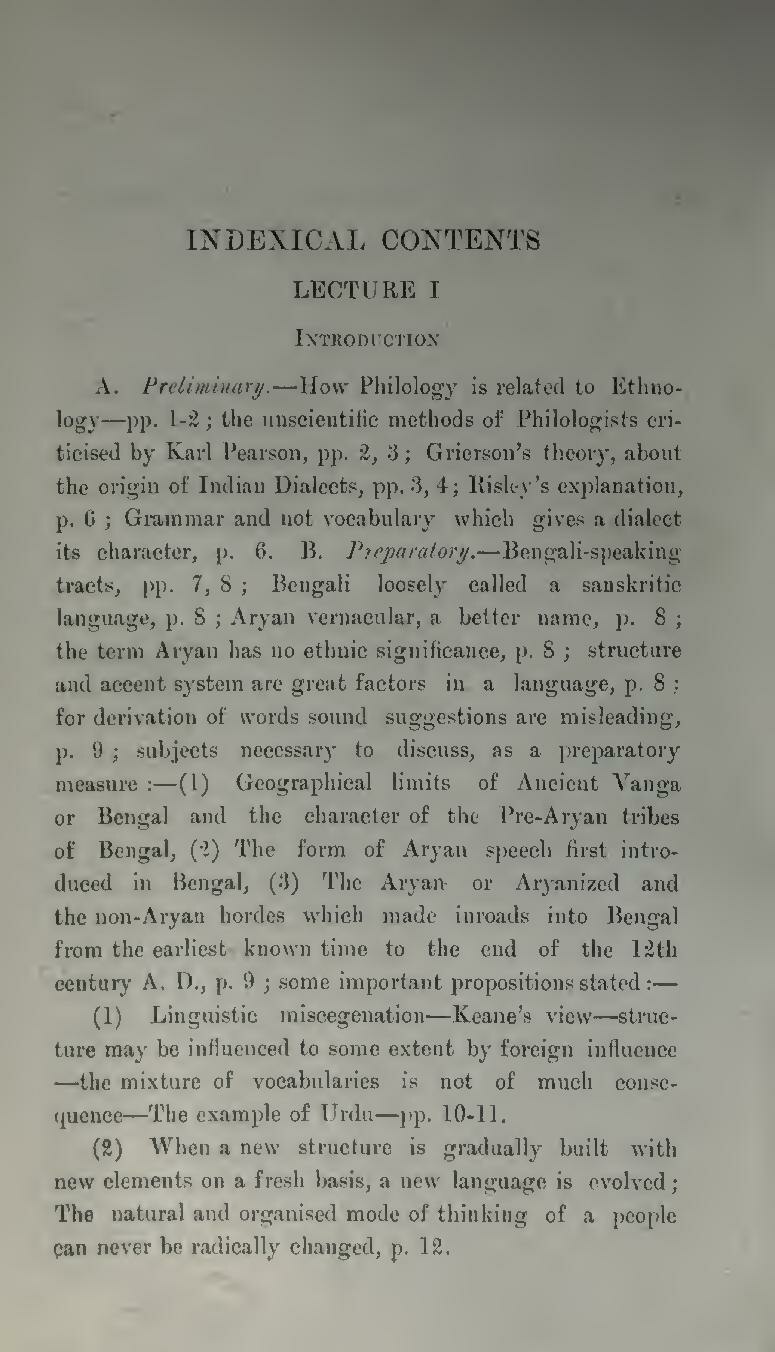A. Preliminary.—How Philology is related to Ethnology—pp. 1-2; the unscientific methods of Philologists criticised by Karl Pearson, pp. 2, 3; Grierson's theory, about the origin of Indian Dialects, pp. 3, 4; Risley's explanation, p. 6; Grammar and not vocabulary which gives a dialect its character, p. 6. B. Preparatory.—Bengali-speaking tracts, pp. 7, 8; Bengali loosely called a sanskritic language, p. 8; Aryan vernacular, a better name, p. 8; the term Aryan has no ethnic significance, p. 8; structure and accent system are great factors in a language, p. 8; for derivation of words sound suggestions are misleading, p. 9; subjects necessary to discuss, as a preparatory measure:—(1) Geographical limits of Ancient Vanga or Bengal and the character of the Pre-Aryan tribes of Bengal, (2) The form of Aryan speech first introduced in Bengal, (3) The Aryan or Aryanized and the non-Aryan hordes which made inroads into Bengal from the earliest known time to the end of the 12th century A. D., p. 9; some important propositions stated:—
(1) Linguistic miscegenation—Keane's view—structure may be influenced to some extent by foreign influence—the mixture of vocabularies is not of much consequence—The example of Urdu—pp. 10-11.
(2) When a new structure is gradually built with new elements on a fresh basis, a new language is evolved; The natural and organised mode of thinking of a people can never be radically changed, p. 12.
